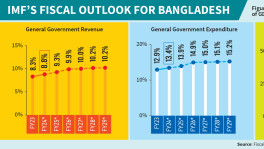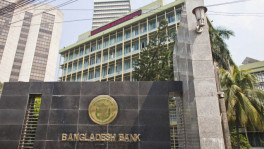FAA waiting for more software details before 737 MAX can return to service
The FAA has been reviewing proposed software and training changes from Boeing Co for months

Boeing Co still has a series of steps to complete before the 737 MAX can return to service, including submitting a pre-production version of a software update, Federal Aviation Administration chief Steve Dickson said.
Dickson met with Boeing executives in Renton, Washington on Thursday and tested revised software in a simulator. Next week, he will meet with around 50 aviation safety regulators in Montreal to discuss the status of the plane, which has been grounded worldwide since March in the aftermath of two fatal crashes.
The FAA has been reviewing proposed software and training changes from Boeing Co for months and it remains uncertain when Boeing will conduct a certification test flight, a step needed before its best-selling plane can fly again.
In a telephone interview with Reuters, Dickson laid out a series of steps that must happen before the certification test flight, adding it should then take about another month before the FAA could allow flights to resume absent unforeseen circumstances.
"I am not going to sign off on the plane until I am personally satisfied," he said.
Some government officials have told Reuters they do not believe Boeing will conduct the certification flight until at least mid-October. Asked if there are at least several weeks of work to be done before that flight can occur, Dickson said he thought that was a "fair statement," but did not want to set a specific date.
Asked about reports that the FAA has at times been frustrated with a lack of information from Boeing, Dickson said he is satisfied that Boeing has been responsive to him and added the FAA had made clear what it expected.
"We've had conversations about the importance of making sure that we are looking at complete documentation and not piecemeal documentation," Dickson said.
"It's really better to be very methodical and very detailed rather than try to rush a partially completed product and then say, 'We'll get back to you with the rest of it.'"
Boeing has repeatedly said it hopes to resume flights early in the fourth quarter. The company reiterated Thursday it remains "committed to working collaboratively" with the FAA and other regulators.
FAA still needs to see Boeing's "final system description" - a "500-ish page document that has the architecture of the flight control system and the changes that they have made," Dickson said, adding that the software changes must be in a "pre-production" code and not a "beta version".
"We need to see that level of refinement and there has been a good bit of back and forth and some constructive discussions," he said.
"Until it is locked down, we've got to go make sure that there aren't any new fault trees that have developed that need to be mitigated."
Once the system description is completed, the FAA will work with Boeing to develop the "integrated system safety analysis" - a step that will take a few days.
Then the FAA will move to the next phase - the pilot workload management scenarios. Once that is done, the agency will be "much closer to a predictable timeline for when the actual certification test flight will occur."
The FAA plans to get input from international regulators EASA, Canada and Brazil. "We've got US and international pilots that have to be scheduled to come out and actually go through the scenarios," Dickson said, adding it must also finalize training requirements.
Boeing plans to revise the 737 MAX software to take input from both angle-of-attack sensors in the anti-stall system linked to the two deadly crashes.


 Keep updated, follow The Business Standard's Google news channel
Keep updated, follow The Business Standard's Google news channel
















